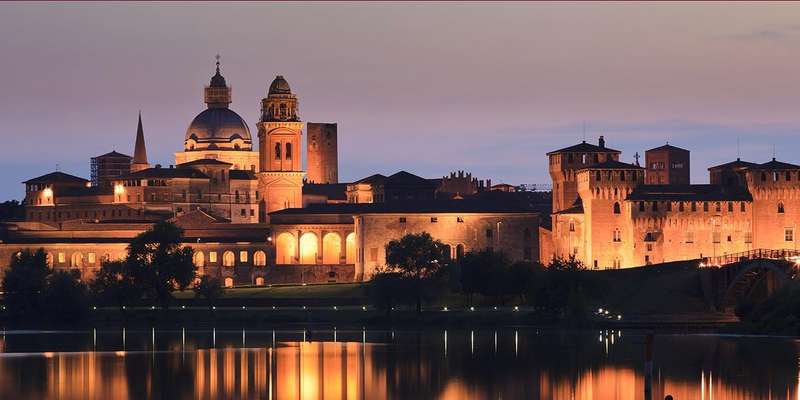- Home
- Useful Tips
- Visiting Mantua's lesser-known...
Most travelers to Mantua miss the Gonzaga family's lesser-known residences, drawn only to the Palazzo Ducale's crowded halls. Over 80% of visitors leave unaware of the city's five other UNESCO-listed Gonzaga palaces, according to local tourism data. This oversight means missing intimate courtyards with fading frescoes, private chapels where dukes prayed, and staircases untouched since the 16th century – all without queues or entrance fees. The challenge lies in locating these scattered sites (some still used as offices) and understanding their fragmented opening hours. For history lovers, skipping these residences means getting only half of Mantua's Renaissance story, while budget-conscious travelers waste money on crowded group tours when quieter alternatives exist just streets away.


Locating Mantua's forgotten Gonzaga palaces
The Gonzaga family ruled Mantua for nearly four centuries, building residences across the city as their influence grew. While Palazzo Te draws Instagram crowds, the equally fascinating Palazzo San Sebastiano sits quietly nearby, its loggia offering panoramic views few tourists see. The problem? Many residences lack clear signage, with some like Palazzo di Bagno hidden within municipal buildings. Start at Casa di Rigoletto, the dwarf jester's actual home converted by the Gonzagas, where you'll find maps marking other family properties. Local archivists note these palaces form a 'hidden constellation' – Palazzo Sordi's 15th-century columns visible through a grocery store window, Palazzo Canossa's courtyard accessible during business hours. Smart visitors use the Ducale's ticket office to ask attendants for current access conditions at smaller sites, as these change seasonally.
Timing your visit for maximum access
Unlike Mantua's main attractions, Gonzaga residences operate on varied schedules that frustrate spontaneous visits. The secret lies in coordinating around 'apertura straordinaria' days – monthly open hours advertised on cream-colored posters near cathedral noticeboards. Midweek mornings (10-12) typically offer the best access, with Palazzo Valenti Gonzaga's botanical garden unusually empty. From June to September, the city runs 'Palazzi Aperti' evenings where candlelit tours reveal normally closed spaces like Palazzo Bianchi's music room. Residents recommend the 3pm 'riposo' window when guards are more lenient about peeking into courtyards. For guaranteed access, time your visit with the Festivaletteratura in September, when palaces host literary events and extend hours. Those staying overnight gain advantage – hotel concierges often hold keys to arrange private viewings at residences like Palazzo d'Arco.
Decoding palace architecture without a guide
The Gonzagas' architectural codes become meaningful when you know what to observe. Look for twin columns flanking doorways – a signature of Giulio Romano's pupils who designed later residences. In Palazzo Vescovile, the staircase spirals counterclockwise to disadvantage right-handed attackers, while Palazzo Cavriani's uneven window spacing reveals where 17th-century taxes were calculated by openings. Local art students often sketch in these palaces and will point out details like the 'grottesche' frescoes in Palazzo Andreasi, cheaper to commission than full narratives. At Palazzo Canossa, run your hand along the portal's marble – its temperature indicates whether the underground aqueduct system still functions. These tactile experiences, absent from guidebooks, transform stone walls into stories. For deeper understanding, the Archivio di Stato provides free pamphlets explaining heraldic symbols in each residence's decor.
Staying near hidden residences for twilight access
Choosing accommodation within Mantua's historic center puts you steps from Gonzaga palaces that reveal their magic at dusk. The Albergo San Lorenzo's top-floor rooms overlook Palazzo S. Sebastiano's moonlit facade, while B&B Corte Chiara grants after-hours access to Palazzo Te's secret garden. Budget-conscious travelers favor Residence Leon d'Oro, whose breakfast terrace shares a wall with Palazzo d'Arco's private orchards. For a truly immersive stay, Palazzo Arrivabene rents apartments within a Gonzaga-era building, complete with original fresco fragments in the bathrooms. These strategic bases allow early morning visits when palace caretakers sweep courtyards and often welcome curious observers. Several residences illuminate their exteriors until midnight, creating free open-air exhibitions – the best being Palazzo Valenti's facade, where projected animations recreate lost fresco scenes from Gonzaga history.



